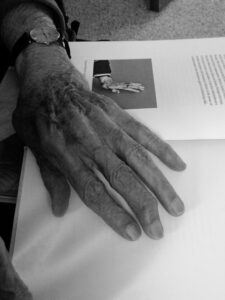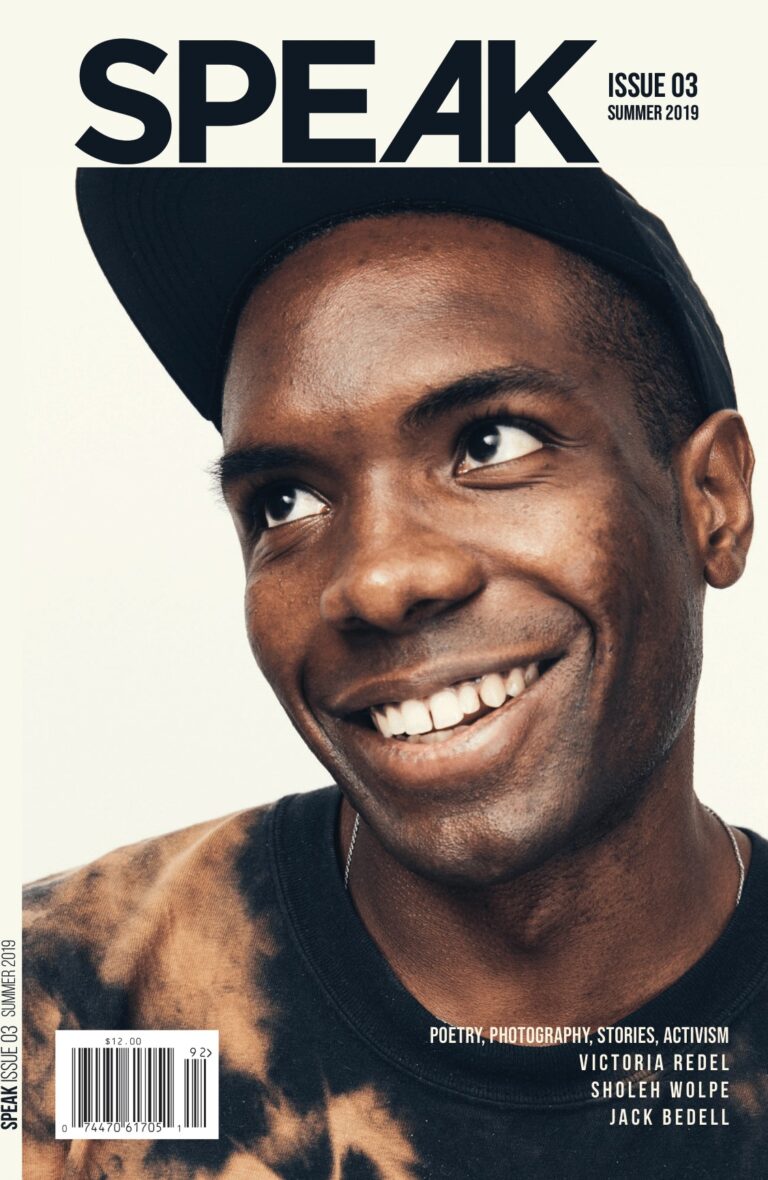
What can go wrong? If the model is wrong, so is everything else.
Stats: Data and Models, page 396
Probably it is raining. It always rains in Portland. Or is about to rain. Or has just stopped raining. Sometimes it’s a light mist that settles onto my uncovered head, slowly dissolving the polymer gels and glues I use to create the illusion of texture in my superfine hair. Or else it is raining slowly, great big drops—like a cartoon approximation of rain—that saturates the front of my jeans improbably quickly, given that the rain is falling drop by languid drop, as if this were New Orleans and not the caffeine-crazed city of Portland, Oregon.
Raining or not, the windows of my brick-walled loft are beaded with water because it’s February or March, early in my new relationship with Katrina, but not so early that we have not claimed love, faithfulness, and loyalty. Or, rather, I have. Because that’s how I am wired. We are on my borrowed queen bed—my ex-wife kept the Sleep Number adjustable bed—lying under the expensive hotel linens that I bought to comfort myself on nights when I am alone. The radiator is clanking, the boiler finally building enough steam to hiss through the pipes and up the four stories to my apartment. The only light on is a four-foot tall paper lantern Ikea lamp that every newly outfitted dorm room or divorcee loft seems to have. Katrina curls her tall naked body around mine, her six extra inches and long arms enveloping my frame. I don’t remember being afraid when I spoke.
“How do you feel about never sleeping with a man again?”
“It makes me a little sad, but I think I can do it,” she says.
The clenching of her pec muscles against my back told me she wanted to say more. Maybe even started to. Then stopped, thought better of it.
Don’t forget to think about assumptions, both normal and independent assumptions.
Stats: Data and Models, page 394
For instance, the assumption that a beautiful femme woman – a woman with a 36-inch inseam (or rather, legs that go on for days) and calves made all the more comely by a pair of spectator pumps – a tall brunette with long, silky hair pulled back into a ponytail or a bun tight at the base of her neck, a girl steeped in the mystery of the makeup counter, somehow makes your butch, Frey boots, button fly jeans, and bow tie-wearing self more acceptable.
Don’t assume everything is normal.
Stats: Data and Models, page 396
Just because she takes you to the Heathman Hotel bar for your favorite dry, dirty Sapphire martini and live jazz on your 46th birthday, then excuses herself to go to the restroom, slips a suite room key into a birthday card envelope, and has a bellhop deliver it while you are waiting for her to return—just because you grin stupidly as you ride the elevator up to a huge room filled with three, or possibly four, dozen roses—and just because she is in the room, waiting on one knee, as you enter, so that she can ask you to marry her, don’t assume everything is normal.
Because instead of a ring, she gives you a GPS training watch. It’s a thoughtful gift, really. For starters, you wanted it to help you track your triathlon training. Secondly, she is giving you this—in lieu of a ring—because, she says, you are so capable at navigating your way through partnership, at sensing when you both have paddled too far from the shore or are about to race over the falls of some relationship issue. It’s a touching and apt metaphor. But when you tell your friends, you wonder what you will do when they ask to see the ring.
But you don’t tell anyone, because what would you say. The lack of a ring stymies you. You want to be claimed publically. A ring shows the world that somebody loves you. A ring—and the institution it symbolizes—has been a life-saving buoy to which you’ve clung for years; something that could save you from the whirlpool of cultural opinion about gender presentation and sexual orientation, and the slow, wide eddy of your own family. Even if you weren’t fast enough to escape the eddy’s draw, at least you had a flotation device to keep from getting pulled under. Maybe.
Nine months later you finally get engagement rings. Yours is a 4mm rose gold band—too small for your big hands, and the wrong tone for your skin. Something about the gold’s color makes your Irish skin look jaundiced. Katrina tells the jeweler her 2mm band is too tight. She thinks that if her hands get hot, the band will constrict her finger so much it might become gangrenous. The jeweler assures her multiple times that the band will not constrict her freedom of movement.
We’ve seen means, variances, and standard deviations of data. We know that they estimate parameters of models for these data.
Stats: Data and Models, page 39X
I meet Katrina and Dan at Queen of Sheba, a dark, Ethiopian restaurant whose walls are covered with 1970s style paneling. They have just finished gorging themselves on wat and lentils wrapped in injera. She wants me to meet Dan, the ring- leader of her trio of new friends she calls “The Three Wise Men” and whom she met while sitting naked in Ritter hot springs. She wants us all to be friends.
Dan makes no move to stand up or shake my hand. As I remember it, he leans in closer to Katrina, and places in front of her a stack of trite little watercolors that he has painted.
She flips through them, and pulls one out. I can’t remember what it looks like, but if I had to guess, I’d say there was a river, dark trees, and a pale moon hanging in a periwinkle sky. That’s the type of image she’d go for—not unlike the black and white picture of mountain ash that hangs above the stove in her house, the photograph taken by the man she will later leave me for and marry.
“That’s all? You sure you don’t like any more?” He leans in, his brat-like fingers urging the art closer to her.
“Let Kate look,” she says and slides the watercolors over to me, rests a hand casually on my thigh. She and I are easy with each other, even as I feel my dislike for Dan rise.
The painting I like is Andrew Wyeth-inspired: a spare field, buff-colored earth, trees in the background, grey-black sky.
“Oh,” I say. “I like this one.”
“Yeah? You can have it for fifteen dollars,” Dan says.
Now we are standing at the curb, saying our goodbyes,. I’m standing behind my 5’11” girlfriend as she bends her frame down to hug the 5’4” rotund and profusely sweating Dan. I’m holding her painting.
Dan says, “I told my wife and kids they better shape up or I’m going to start a new family with you, have some new babies.”
Katrina is quick. “Dan, the only person I’m going to have a baby with is Kate.”
But, using a Normal model when it really does not apply will lead to wrong answers and misleading conclusions.
Although we know how to find the expected value and the variance, that’s not all.
Stats: Data and Models, page 396
The question you must ask yourself is why are you attracted to seemingly straight girls? Technically speaking, they aren’t all straight. Your ex-almost-wife Katrina is undoubtedly, undeniably bisexual. Dear reader, you can imagine the data points that prove this value. Your actual ex-wife, the woman with whom you spent 24 years, and with whom you learned how to lay laminate flooring and build a shed that is square, with whom you raised and buried three dogs and three cats (the last of which is not actually dead but sent, instead, to a new home with new people to bite), and with whom you purchased a matching bedroom set just like a suburban couple, well, your actual ex-wife is straight. At least that’s what you believe and will tell your three therapists.
The constant here is K. The author is named Kate. This is why it is crucial to be able to interpret the meaning of the expected value and the standard deviation of a random variable in the proper context.
Just because a random variable is continuous or you happen to know a mean and standard deviation, doesn’t mean that the Normal model will be useful.
Stats: Data and Models, page 396
Even with an equation in place, the solution can elude you or the problem can only be seemingly solved.
These are random variables, not the variables you saw in Algebra. Being random variables, they take on different values each time they’re being evaluated.
Stats: Data and Models, page 389
One time you think it’s the engagement ring that stands out. Another time you consider a man’s flesh-colored cock in stark relief to your four colored latex cocks. The next time you reflect on her insistence, ex-post facto, that even though she had an affair, left, and moved directly from your house to the male photographer’s house, she did this for herself.
You can continue going to therapy, pulling out the variables and finding their expected value. But you must, each time, interpret your results in context. Just because each random variable describes a similar situation doesn’t mean that each random outcome will be the same.
The day you finally recognize this comes 16 months after Katrina has left. You are not exactly thinking of her, but you are moving the kayak she left in your garage. Well, she didn’t exactly leave it for you, it’s that she had no place to store it at the time and now she knows better than to come asking for it. You are trying to load it onto your car, pressing its 58 pounds up over your head so you can get the red, 12-foot-long boat situated correctly on the roof rack of your green Kia Soul. As you tip it up into the cradles on the rack, the cockpit cover comes loose and a can of Red Man chewing tobacco rolls out and onto the driveway.
Take a good look at the expression now. It’s easy to calculate the expected value of a (discrete) random variable.

meet the author
Kate Carroll de Gutes
Kate Carroll de Gutes lives in Portland, Oregon in a house with lots of light, wood floors, and a view of the best bridge in the city. In the evenings, she sits at her great-grandparents’ quarter-sawn oak table and writes long-hand [...]
Read More
Subscribe to our newsletter







